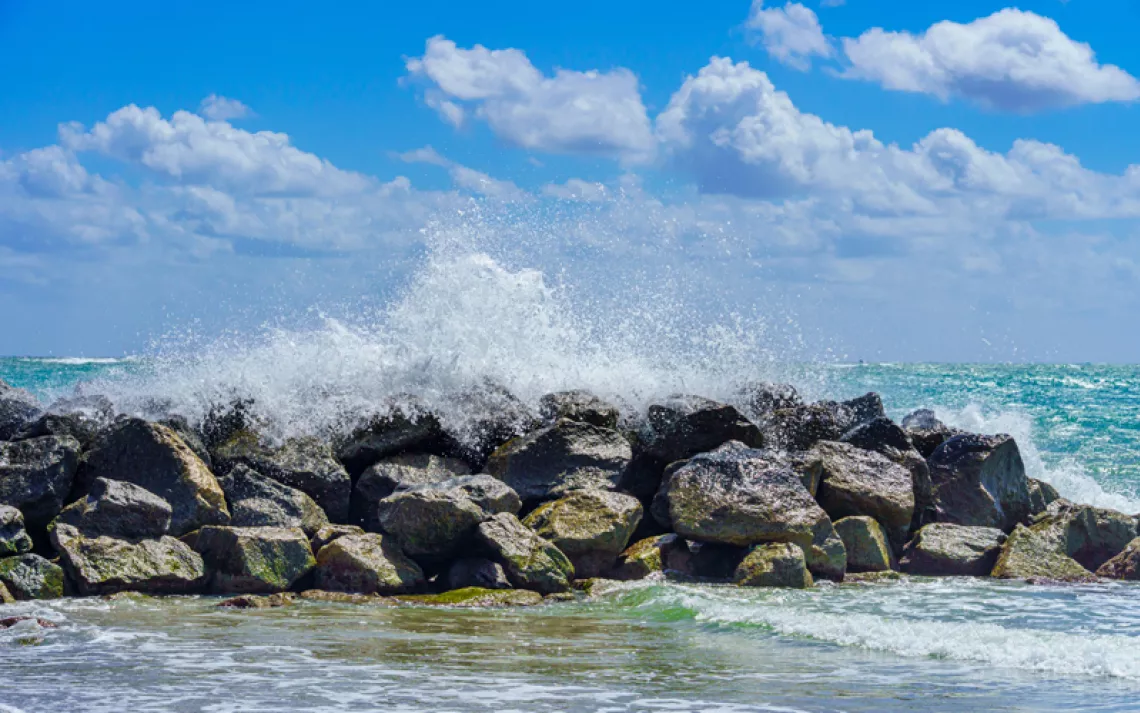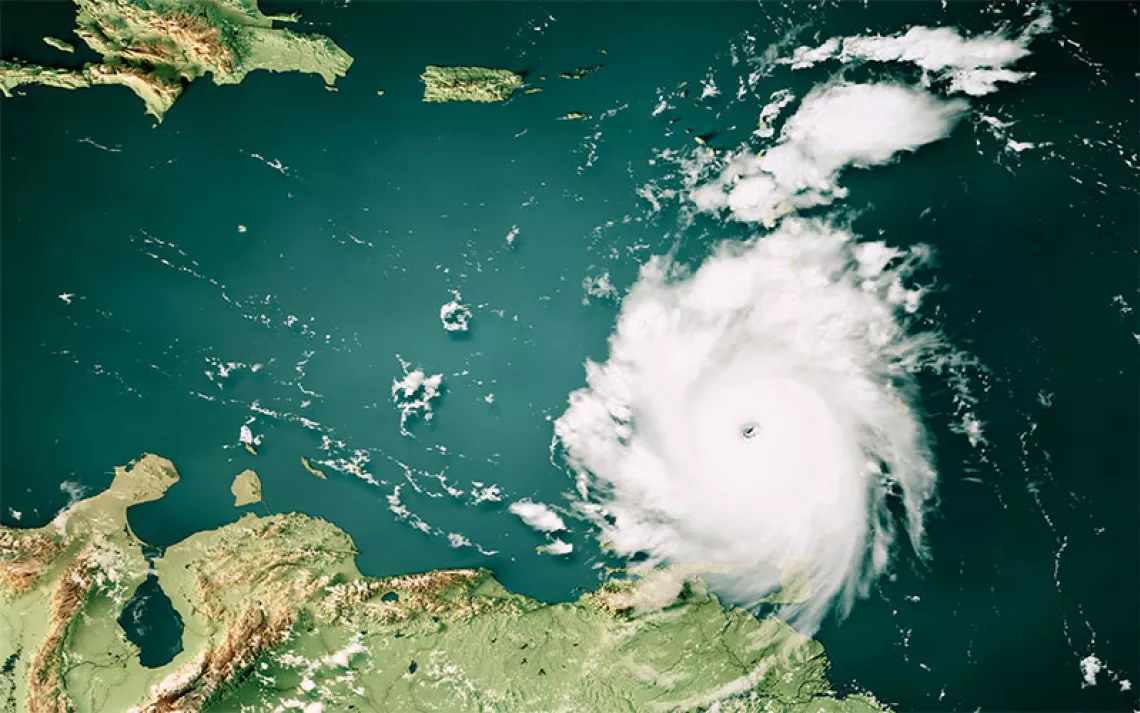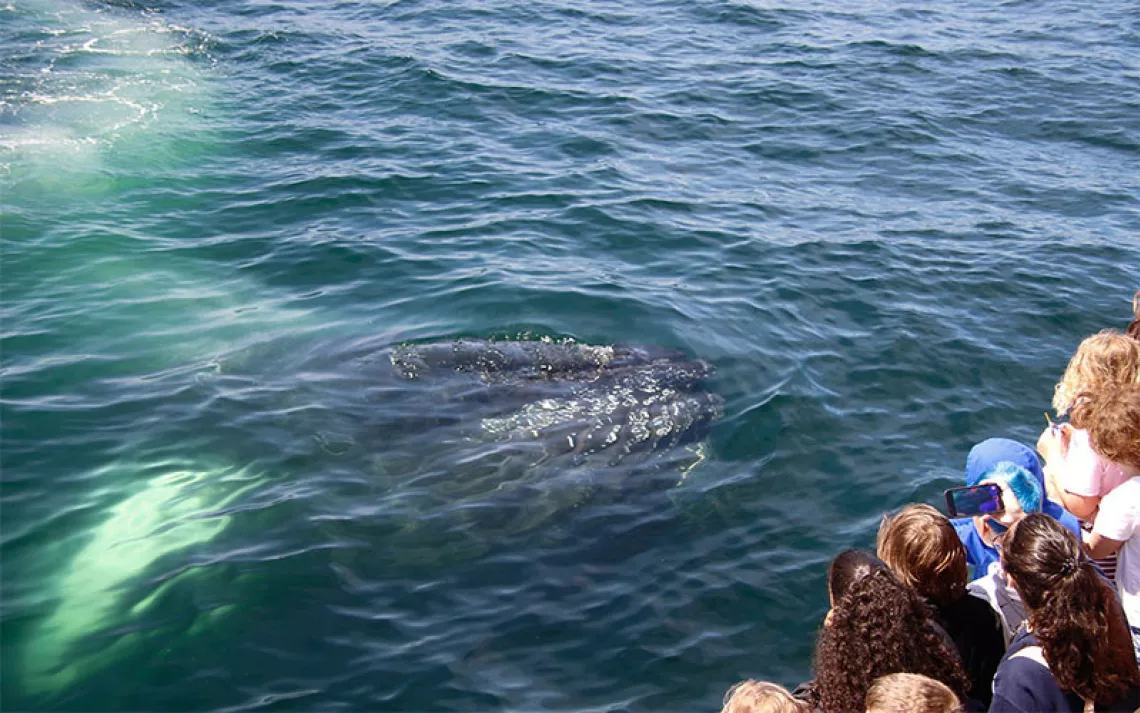Can Atlantic Whale Deaths Be Stopped?
Scientists look for answers after a spate of unusual mortality events

A humpback whale found hog-tied from the mouth to the flukes was successfully disentangled. | Photo courtesy of Center for Coastal Studies/NOAA permit #1876
Bad things are happening to whales along the Atlantic coast of North America. Last year, 17 North Atlantic right whales died, as did 33 humpback whales and 28 minke whales. NOAA Fisheries declared each of these an “unusual mortality event,” the first time they’ve ever had three such declarations simultaneously in the same region.
So far this year, one right whale was found dead off the Virginia coast, while eight humpback and three minke deaths have been recorded. In 2016, 26 humpback fatalities occurred along the Atlantic from Maine to Florida, which are included in that species’ mortality event. That brings the totals to 67 humpbacks, 31 minkes, and 18 North Atlantic right whales.
“Another scary element of this story is that these mortalities are minimums,” said Charles “Stormy” Mayo, senior scientist at the Center for Coastal Studies in Provincetown, Massachusetts. There are almost certainly whales that die out at sea and are never seen. Deborah Fauquier, veterinary medical officer for NOAA Fisheries, who is in charge of coordinating the investigations, admitted that “we don’t really have a great estimate of how many carcasses we are missing versus recovering.”
According to Fauquier, 70 whales have undergone examination or necropsies; ship strikes accounted for 21 of the fatalities, and 14 were due to entanglement with fishing gear. Fauquier also said that nine minke whales and one humpback have been confirmed as succumbing to infectious diseases, but there is no single pathogen responsible. Others died of undetermined causes.
When asked if there was a common thread to all the whale deaths, the NOAA veterinarian said that so far in their investigations, “we're not seeing direct connections.” But other scientists disagreed.
“Climate change is essentially shifting the prey species that these animals feed on,” said Francine Kelley, project scientist for the marine mammal protection project at the Natural Resources Defense Council (NRDC).
North Atlantic right whales are an endangered species, with just 450 remaining. They feed on a tiny copepod no bigger than a grain of rice, and they have to consume as many as 2 billion a day. The whales feed at the very southern edge of the copepod’s range.
“We expect, with climate change, that the distribution of this copepod will lift to the north,” said Mark Baumgartner, a marine ecologist at the Woods Hole Oceanographic Institute. He explained how right whales began changing their movements around 2010. Once found in abundance in the Bay of Fundy and along the Great South Channel between Nantucket and Georges Bank, they now favor the Gulf of St. Lawrence and Cape Cod Bay.
Cape Cod is Mayo’s prime study area, and even he is surprised. “There are too many right whales in Cape Cod Bay. They shouldn't be here in these numbers.”

A Maine lobsterman setting traps in Casco Bay | Photo courtesy of Dan Zukowski
Right whales, humpbacks, minkes, and other sea creatures can easily become entangled in the fishing ropes used in lobster and crab fisheries. About 85 percent of North Atlantic right whales bear scars from fishing gear, as do half of humpback whales in the Gulf of Maine. Last year, right whales collided with Canada’s snow crab fishery in the Gulf of St. Lawrence, where at least five became entangled, resulting in two fatalities. As a result, the Marine Stewardship Council suspended its sustainability certificate for the Southern Gulf of St. Lawrence fishery effective with the 2018 season.
“Entanglements are gruesome events,” Baumgartner said. A whale will encounter a hard-to-see vertical line, running from lobster or crab traps on the seafloor to a marker buoy on the surface. As the line gets snared by a fin or fluke, it will drag along hundreds of pounds of associated gear.
On January 11, 2015, a small humpback whale was seen nearly motionless at the surface by a research team from the Center for Coastal Studies. As a great white shark circled the whale, they saw that it was entangled from its mouth to its flukes. It seemed to the researchers that the animal was effectively anchored by the fishing gear. The whale was bleeding from a fresh bite wound on its left flank.
The team jumped into action. They used a knife on a long pole to slice through the rope at the mouthline, then worked around to the massive jumble of ropes trailing the flukes. A series of cuts freed the whale, after which the researchers watched it speed off.
The consequences of entanglement are staggering, especially for females. Reproductive rates for right whales have collapsed in recent years. There are just 100 breeding females, and only five calves were born in 2017. It appears that no calves were born this year. Baumgartner explained that birthing carries higher energy needs, and entanglements not only use up the whale’s energy reserves but also hinder their ability to feed and replace them.
He and others are working to develop ropeless fishing gear. “The promise of ropeless fishing is that this problem of entanglement will go away, not only for right whales but also for humpback whales, fin whales, blue whales, leatherback turtles, and basking sharks,” Baumgartner explained. But he notes that the technology is still in its infancy.
Already highly regulated, the lobster industry fears more regulation and higher costs if ropeless technology is imposed on them. Beth Casoni, executive director of the Massachusetts Lobstermen’s Association, lamented that “every year we're losing fishermen.”
Whale scientist Stormy Mayo, whose family has been fishing out of Provincetown since the 1600s, put it in these terms: “It's really the collision between two endangered species, the endangered fisheries of New England waters and the endangered North Atlantic right whale.”
Baumgartner doesn’t want to see more costs pushed onto the fishing industry. “If we as a society want to preserve right whales, then we should support the fishermen in their efforts to stop inadvertently killing whales.”
He’s also exploring the use of remote acoustic monitoring systems to reduce ship strikes. For the past year, a self-guided submersible glider has been prowling the waters off Massachusetts and the Gulf of St. Lawrence, listening for whale calls. Every two hours, it surfaces and sends data back to Baumgartner’s team at Woods Hole. There, the information is reviewed, posted online at Robots4Whales, and made available to shipping interests.
During its most recent deployment in the mid-Atlantic, the glider detected at least 19 humpback whales, 11 fin whales, and one right whale. Baumgartner said the glider will be headed to the Gulf of St. Lawrence this summer, which, along with aerial surveys, will help monitor whale activity in this busy seaway.
While minke whales and the West Indies population of humpback whales (the ones frequenting the North Atlantic) are not endangered, it’s entirely possible that the North Atlantic right whale will not survive this gauntlet of threats. And there are other, ominous threats that will impact all three of these whale species along with many other marine mammals.
Soon, seismic testing for oil exploration could begin along the Atlantic coast. Even as many states push back on the prospect of oil and gas development, the Bureau of Ocean Energy Management (BOEM) is currently reviewing eight permit applications for testing. The NRDC’s Kelley says that the permits could be granted in the next few weeks, and that seismic testing “would go ahead irrespective” of any decision to proceed with oil drilling. The ongoing, deafening noise produced by air guns used for seismic testing could disrupt whale communication and separate moms and calves.
Kelley also worries that the Marine Mammal Protection Act (MMPA) is “under direct threat right now from the oil and gas industry.” She calls the MMPA “critical” to protecting marine mammals both in the U.S. and internationally.
Other marine mammals nearing extinction include the vaquita, the Bryde’s whale in the Gulf of Mexico, and the Eastern North Pacific right whale. Each of these has just 30 individuals left.
Can the North Atlantic right whale avoid the fate of those species? “If we gave them a pristine ecosystem, we would probably get out of this hole,” Mayo suggests. But with ocean noise, climate and ecosystem change—threats enumerated by NOAA Fisheries itself—that may just be wishful thinking.
 The Magazine of The Sierra Club
The Magazine of The Sierra Club



